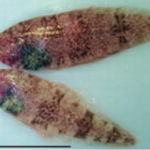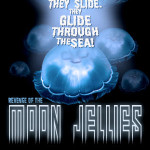by Peter Etnoyer

What do you think happens to all the caffeine, cumadin, and Xanax people take every morning? They go into wastewater. How about the expired and unused pills? They go down the drain, get flushed down the toilet. And where do they end up? In dolphins and fish in your bay.
New investigative research published in the Olympian estimates American hospitals and long-term care facilities flush 250 million pounds of pharmaceuticals and contaminated packaging down the drain each year. This is corroborated by federal studies.
In 2002, the U.S. Geological Survey (USGS) found these pharmaceutical contaminants in 80 percent of the 139 streams sampled in 30 states. Mark Powell at Blogfish links to a couple interesting stories, including one with a solution called "Smart Disposal: a prescription for a healthy planet".
"So what," you say. "Will the fish easier to catch now that they’re stoned and hungry?". Could be.
One lecture I heard last year by researchers out of Charleston, SC demonstrated that drugged fish show decreased reaction times to natural predators. This won’t make it easier for you to catch them. It will make it easier for their predators to catch them, so… none for you. To me, this story represents the intersection of science, health, and the environment. It’s an emerging issue.
We need to push for our community hospitals and long-term care facilities to limit and track pharmaceutical disposals. We don’t want our kids on drugs, much less swimming in them. Remember, wastewater is a municipal problem. The USGS can survey, and the EPA can regulate, but its up to the counties and the states to implement better practices. Make it an issue in your community.






off topic here, but is it possible, like you did over at SciBlogs, to include the name of the author of each post? It’s nice to know who is writing what.
We’re working on these and other settings, Jim. Thanks. As it is, we have to underline and color our own hyperlinks using TypePad. That’s why some are blue, some light blue, some invisible…
No! I don’t want this problem to be rectified anytime soon. I am applying for faculty jobs wherein I state my research plan as to study the effects of pollutants (environmental estrogens and pharmaceuticals and personal care products or PPCPs for short) on the functions of select “hypothalamic” neurons in teleost fish. I’ll be out of the job market if they stop dumping all the crap into the ecosystem.
I kid, of course.
Something tells me you you won’t run out of pollutant problems. Good luck with the job hunt and keep us posted where you end up!
Terrifying implications. Thanks Peter for keeping us enlightened. That picture speaks volumes!